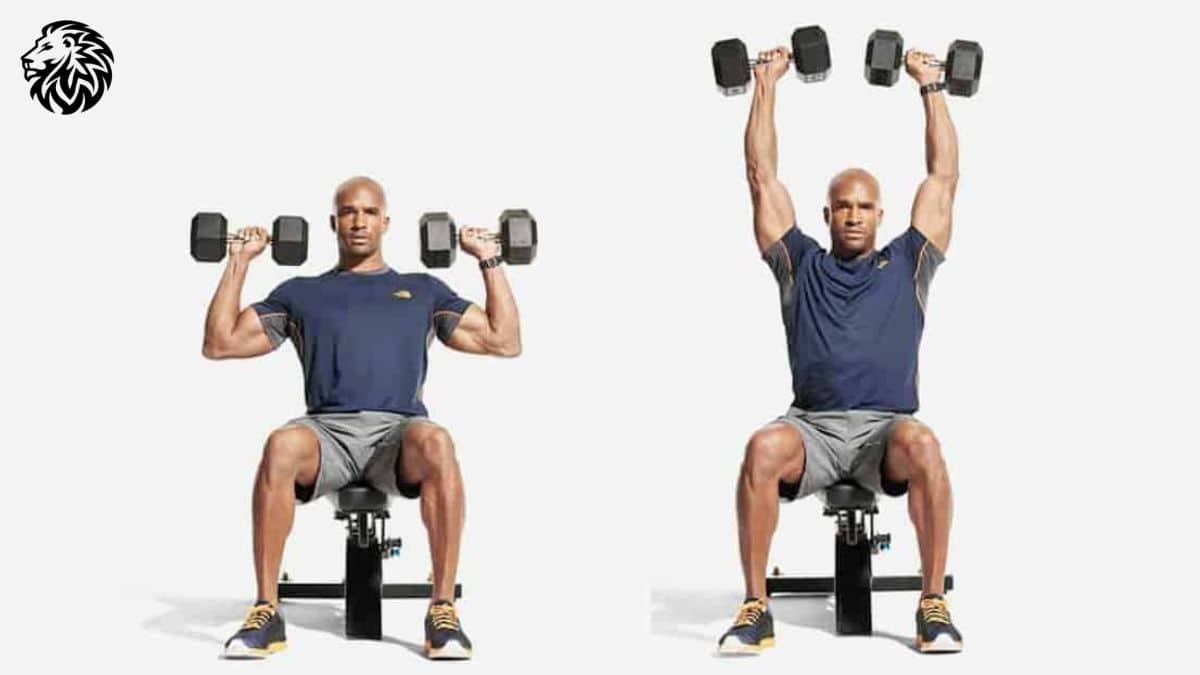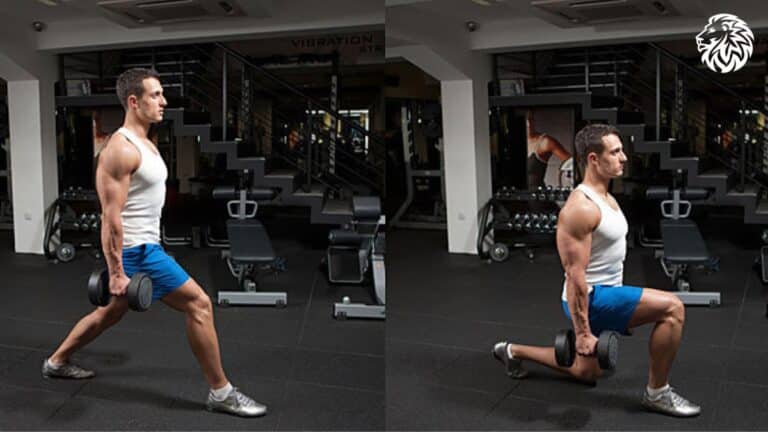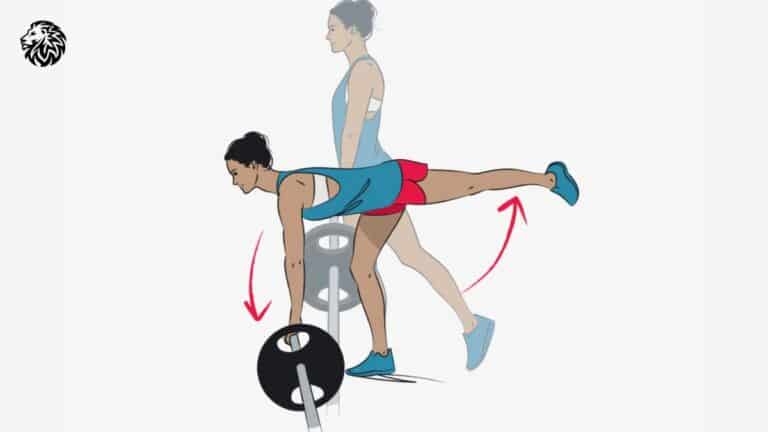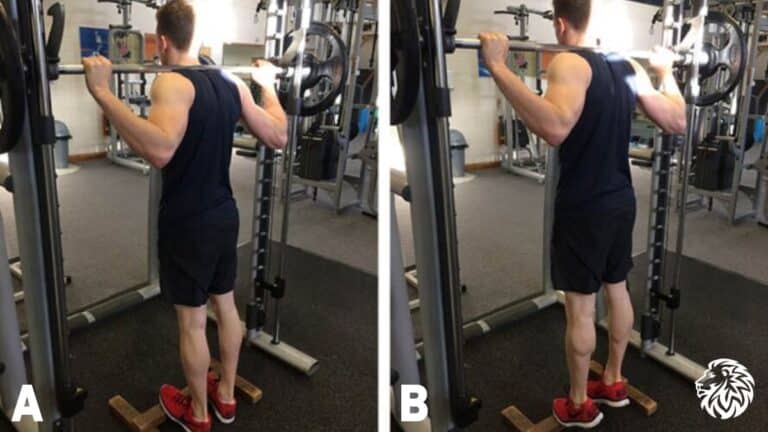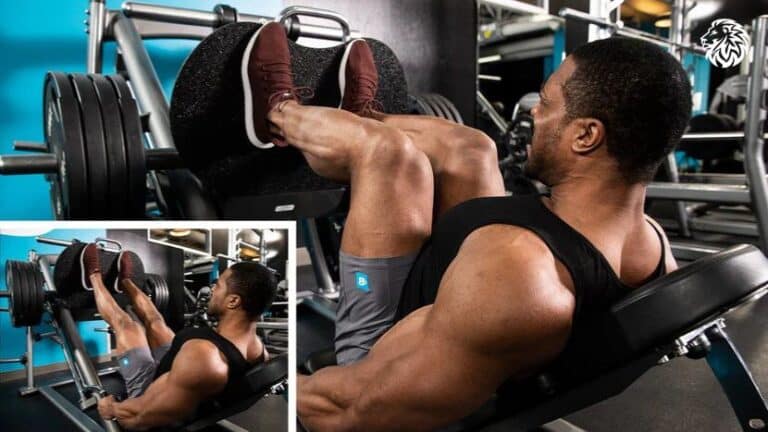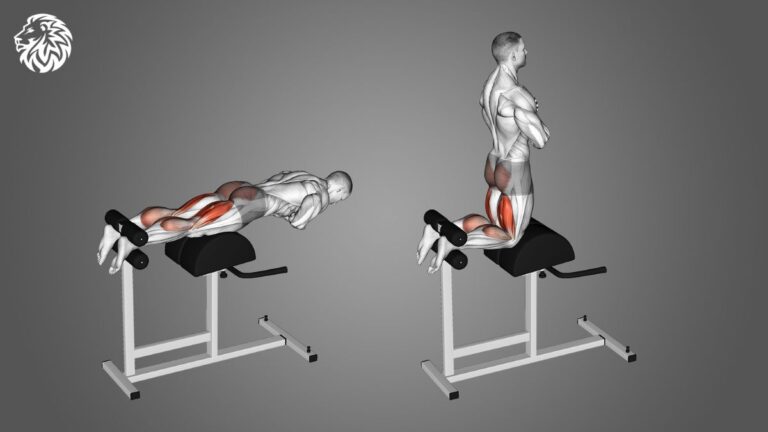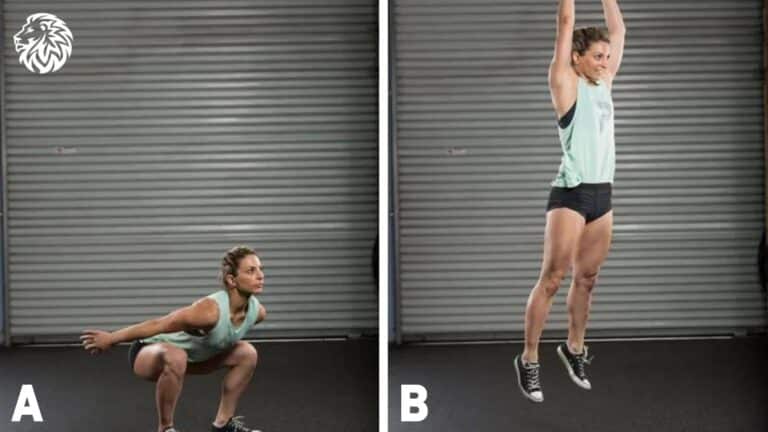The seated dumbbell shoulder press is a great exercise for building upper body strength and defining your shoulders. It provides a controlled movement that isolates the deltoid muscles while engaging supporting muscles for stability. Whether you are a beginner or an experienced lifter, adding the seated dumbbell shoulder press to your workout routine can improve strength, enhance muscle definition, and contribute to overall shoulder health. This exercise also reduces the risk of injury by reinforcing the stabilizing muscles around the shoulder joint.
Exercise Instructions for Seated Dumbbell Shoulder Press
- Setup – Sit on a sturdy bench with back support. Keep your feet flat on the ground, hip-width apart, and maintain a neutral spine. Engage your core to stabilize your body.
- Grip and Positioning – Hold a dumbbell in each hand with a firm grip. Lift them to shoulder height, palms facing forward. Your elbows should be at a 90-degree angle, directly beneath your wrists.
- Pressing Motion – Exhale and press the dumbbells upward in a controlled motion until your arms are fully extended but not locked out. Keep your shoulders down and avoid shrugging.
- Lowering the Dumbbells – Inhale and slowly lower the dumbbells back to the starting position at shoulder height. Maintain control and avoid letting the weights drop too quickly.
- Repeat – Perform the desired number of repetitions while maintaining control and proper form. Keep your movement slow and steady to maximize muscle engagement.
Muscles Targeted
The seated dumbbell shoulder press primarily targets the deltoid muscles, which consist of the anterior (front), lateral (side), and posterior (rear) heads. The exercise also engages the trapezius, triceps, and upper chest muscles for stability and support. By strengthening these muscles, the movement helps improve overall upper body strength and enhances functional fitness for daily activities.
Why This Exercise is Important
The seated dumbbell shoulder press strengthens the shoulders, enhances upper body stability, and improves posture. Unlike barbell presses, dumbbells allow a greater range of motion, reducing strain on the joints and promoting balanced muscle development. This exercise is essential for athletes, bodybuilders, and anyone looking to improve shoulder function for daily activities. Additionally, by engaging stabilizer muscles, it helps reduce the risk of shoulder injuries and enhances mobility in overhead movements.
Tips and Things to Avoid
- Keep Your Core Engaged – Maintain a tight core throughout the movement to support your lower back and prevent arching.
- Use a Controlled Motion – Avoid using momentum to lift the weights. Focus on a slow and steady movement to maximize muscle engagement.
- Do Not Lock Your Elbows – Fully extend your arms at the top but keep a slight bend to prevent joint strain and hyperextension.
- Choose an Appropriate Weight – Select a weight that allows proper form without excessive strain. Lifting too heavy can lead to poor technique and increased injury risk.
- Avoid Shrugging Shoulders – Keep your shoulders down and away from your ears to prevent unnecessary tension in the neck and traps.
- Breathe Properly – Exhale while pressing the dumbbells up and inhale while lowering them to maintain stability and control.
Reps and Sets
| Fitness Level | Sets | Reps |
|---|---|---|
| Beginner | 3 | 10-12 |
| Intermediate | 3-4 | 8-10 |
| Advanced | 4-5 | 6-8 |
Other Exercises to Use
To complement the seated dumbbell shoulder press, consider adding these exercises to your routine:
- Lateral Raises – Targets the lateral deltoid for broader shoulders and improved symmetry.
- Front Raises – Strengthens the front deltoids for improved pressing power and anterior shoulder definition.
- Face Pulls – Engages the rear delts and improves shoulder stability, reducing the risk of imbalance.
- Dumbbell Arnold Press – Enhances shoulder mobility and overall strength by incorporating rotation for a full range of motion.
- Overhead Barbell Press – A compound movement for building overall shoulder mass and power.
- Reverse Flys – Strengthens the posterior delts, improving overall shoulder balance and preventing forward slouching.
Final Thoughts: Seated Dumbbell Shoulder Press
The seated dumbbell shoulder press is an effective exercise for building strong, well-defined shoulders. It helps improve pressing strength, enhances posture, and reduces the risk of injuries by strengthening stabilizing muscles. By maintaining proper form and incorporating complementary exercises, you can maximize the benefits of this movement and see consistent progress in your strength training routine. Whether your goal is muscle growth, endurance, or general fitness, this exercise is a valuable addition to your workout.
Frequently Asked Questions about Seated Dumbbell Shoulder Press
1. How much weight should I use for the seated dumbbell shoulder press?
Start with a weight that allows you to complete 10-12 reps with good form. Increase the weight gradually as you build strength. Avoid lifting too heavy at the expense of proper form.
2. Can beginners do the seated dumbbell shoulder press?
Yes, beginners can perform this exercise with lighter dumbbells and focus on mastering proper form before increasing weight. Using a back-supported bench can help maintain stability.
3. Should I do seated or standing dumbbell shoulder press?
Seated presses provide more stability, reducing lower back strain. Standing presses engage more core muscles but require greater balance and coordination.
4. How often should I include this exercise in my routine?
You can do the seated dumbbell shoulder press 1-2 times per week, depending on your workout plan and recovery time. Avoid training shoulders on consecutive days to allow for proper muscle recovery.
5. Can I perform this exercise with one dumbbell at a time?
Yes, using a single dumbbell (alternating arms) can help address muscle imbalances and improve shoulder stability. It also increases core activation since your body must compensate for the unilateral movement.
